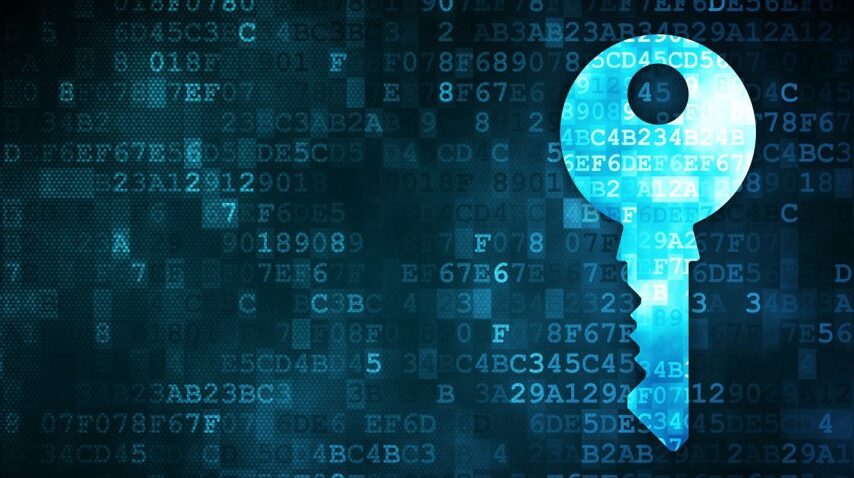As the world is getting more connected, data security is becoming the most pressing problem in the digital world. Businesses have to search for new ways to keep their sensitive information safe and content producers should think of how to better protect their copyrights.
According to the Official Cybercrime Report by Cybersecurity Ventures report, every company in the world is exposed to cybercrimes and data breaches. Moreover, it predicts that by 2021 a business will fall victim to cybercrime every 11 seconds, costing the world more than $6 trillion.
How to secure your data and copyrights effectively and minimize the risk of joining the ranks of these dreadful statistics? Fortunately, there is a solution – data encryption. Data encryption ensures data protection whether you send, receive, or store it on any device.
Using a Data Protection Officer as a Service, we are able to ensure compliance with data protection regulations and safeguard all of our customer’s personal information.
In this article, we explain everything you need to know about data encryption. You’ll learn about:
- What is data encryption?
- How does encryption work?
- How you could apply data encryption to protect your content.
What is Encryption?
Data encryption is a longstanding practice of protecting sensitive data by translating it into another code or form. Only those who have a secret key can decode and understand it.
Since the development of the most famous encryption machines – Enigma and Alan Turing’s Bombe Machine – cryptography has made major strides in its development. Currently, many digital businesses and entrepreneurs use data encryption as a powerful method to secure their data. For this, they use asymmetric encryption, also referred to as public-key cryptography, and symmetric encryption.
How encryption works
To encrypt and safely transfer any data, there are special encryption and decryption tools that use encryption algorithms and decryption keys. That’s how encryption works:
- A special encryption program takes plaintext and encodes it with encryption algorithms turning it into ciphertext. The plaintext is the data you want to encrypt like important messages or an email. The ciphertext is the secret format that nobody can read without a secret key.
- When you have your data in the form of a ciphertext, you can safely send it to your business partners or clients.
- As your business partners or clients get the encrypted data, they need to use decryption keys to decode it for use.
Symmetric and asymmetric encryption
For improved data security, businesses can use two types of encryption – symmetric and asymmetric encryption.
Symmetric encryption uses a single secret key that can encrypt and decrypt a file or a message. If you want to send a file with symmetric encryption, you need to share the secret symmetric encryption key with your partners beforehand.
With symmetric keys, recipients can decrypt the received files much faster than with asymmetric encryption. On the other hand, if you need to share a large amount of confidential data, it becomes inconvenient as it requires exchanging too many secret keys. Therefore, some businesses use asymmetric algorithms for sharing sensitive data.
Asymmetric encryption uses two key types – a public and a private one – when it encrypts the data. A public key works for data encryption and can be shared publicly with several users, while a private key works for data decryption and should be kept in private.
How Can Encryption Protect Your Content
Many companies and individual entrepreneurs use encryption algorithms for digital rights management.
Digital rights management (DRM) is the service provided by specially developed software that protects your copyrights for digital media. It means that it limits the users of your content to copy your works and spread them illegally.
DRM software is especially beneficial to writers, copywriters, publishers, researchers, startups, teachers, and many other knowledge professionals. It helps them to control how paying users handle their content.
It also helps companies to protect their information flows by restricting access for some users to certain assets or preventing unauthorized data access and use.
Some businesses use DRM software to stream videos or share audio and texts as premium content on various platforms.
How DRM software works
DRM software encrypts, stores, and provides the content for certain users with the help of special DRM schemes. These schemes ensure that various devices are able to display the encrypted content based on certain conditions.
To encrypt videos DRM software uses symmetric encryption. It means that a user doesn’t need to store any special encrypted codes on their device to reach the content and, therefore, can do it from any gadget.
For example, a user watches a video and at some point, they decide to play it back. Then their video player will request a key from a license server which defines if this user and their device are authorized to perform this action. If the user has got the right to play the video back, the server will send a decryption key to the device and the video player will decrypt the content and play it again for the user.
Data Protection for Your Digital Rights
To protect your copyrights you don’t need to develop any DRM software. Moreover, it’s not necessary to buy expensive DRM software and install it on your devices with license codes. Instead, you can use some ready-made and well-developed solutions that can provide you with comprehensive data protection services.
One of them is the Crypto Gateway solution created by SCAND software development company. It allows you to encrypt any type of content such as videos, texts, audio files and safely display it on various devices. It means that you don’t have to worry that anyone can pirate your content, use it illegally.
Crypto Gateway helps to secure your sensitive data stored on mobile devices, computers, laptops, or in a cloud so that you can feel safe sharing your ideas with others.
Conclusion
The issues of data and content protection have been growing more critical with internet development. Now, we face the situation when data protection problems have reached their peak.
Non-authorized users can benefit from the illegal use of the acquired data. Therefore, it’s essential to ensure that your data is secured before going online or sharing your content with others. For this, you can use various solutions, starting from DRM software ending to less expensive though as reliable DRM services.








